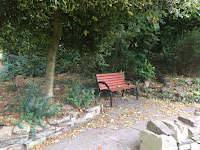I recently attended the National Creative Writing Graduate Fair at Manchester Metropolitan University. There was an opportunity to attend panels and workshops, and pitch to a literary agent! However, it is hard to take in what is being said and make notes at the same time, so I have paraphrased!
Balancing Act:
Living and Working as a Writer
SJ Bradley (Writer)
Adam Lowe (Writer/Performer/Publisher)
AL: If getting started is difficult, try writing about anything. Or write around the subject – write about your characters, the setting, etc. Or draw a map of your location. Anything to trick yourself into writing.
SJB: It can be a challenge to get people to take you seriously as a writer. You have to be strict about your writing time. Think of it as work. Don’t let anything interfere.
AL: Switch your phone off. Have set writing times. Set boundaries.
SJB: If it helps, go somewhere to work where you can’t be interrupted – like a café. You’ll also get that ‘going to work’ feeling!
AL: Find time to think. Let things percolate. Reads books – it counts as work (films count too, if relevant). But be strict with yourself. And don’t work in the evenings, it’s unhealthy.
SJB: But don’t write yourself out!
AL: It can sometimes be helpful to leave something for the next day. Try breaking off halfway through a sentence!
AL: But it is important not to sequester yourself. It’s good to meet other writers. Bounce ideas off each other, compete with word counts, but be supportive of each other. Writers are like magpies, they love new and shiny. Meet new people. Have new experiences. It will make your writing come alive. If you don’t go beyond your own experiences the reader is never surprised and it can lead to inadvertently duplicating ideas or themes from existing books or movies.
AL: It’s easier for others to take you seriously as a writer when you are paid for your work. Don’t use the excuse that because you love your job you’re happy to work for free. Lawyers love their work too but they don’t work for nothing!
If you’re on Twitter, check out SJ Bradley’s timeline (@BradleyBooks), where you can find answers to some of the questions there wasn’t time for.
Going Digital:
New Opportunities for Writers
Kathryn Taussig (Associate Publisher: Bookouture)
Michelle Green (Writer)
Kit Caless (Co-founder/Editor: Influx Press & Co-founder: #LossLit)
Michelle Green told us about her collection of short stories, Hayling Island: Stories at Sea Level, to be published as a digital audio map in collaboration with a composer, digital artist and literary geographer. The map will link to local tidal reports and change according to the real-time time on the island. For example, a story set on one of the sand banks will be inaccessible when the tide is in!
Kit Caless talked about the digital story-telling project, LostLit, which explores the various influences of loss in literature. The LostLit Twitter write club is hosted every first Wednesday of the month between 9.00 pm and 11.00 pm, and open to all. Updates and retweets can be found on @LossLit, and hashtagged #LostLit.
Kathryn Taussig is an Associate Publisher for Bookouture, who were one of the first digital book publishers. Their challenge was to make their books more visible and to stand out from the crowd. With traditional publishing you only have one shot to get it right. Sometimes even the most promising books can fail for no apparent reason. With digital publishing there can be more individuality, and there is the opportunity to re-brand authors and try things that are different. For example, if a book cover doesn’t work it can be quickly and easily changed. Readers of ebooks are voracious and ideally they want two or three books a year from their favourite authors.
Bookouture publish mostly commercial fiction, including women’s fiction, romance, sagas, and psychological crime. They take unagented submissions, which can be made through a portal on their website. Their authors receive a higher percentage of royalties – 45% of everything they receive from the retailer.
Writing the Perfect Synopsis
Debbie Taylor (Founder & Editorial Director: Mslexia)
An elevator pitch is the character, their quest, and the obstacle preventing them getting it. Concentrate on just one character – who is the most important person in your story? – and be sure to name them!
A synopsis is the summary of characters and plot in order, not a blurb. Your submission letter explains who you are, the sample of three chapters proves you can write, but the synopsis is there to show how you plan to develop your story. A synopsis may also be used to create the blurb on the back of the book, and sent to the designer to create the cover art.
A synopsis should be between 500 and 1,500 words (but check individual guidelines). Write it in the present tense, third person, ‘omnipresent’ point of view. It should start with a summary paragraph, similar to the ‘elevator pitch’, followed by the sequence of actions that make up the plot. Summarise each character’s profile when they turn up. Who propels the story forward? Give their name, occupation, social position, and anything distinctive about their appearance or an unusual personality trait.
Related Posts:
Links:
Comma Press
Louise Marley is an Amazon Top 100 bestselling author and a creative writing tutor with Writing Magazine. Her latest book is Trust Me I Lie.
Louise Marley is an Amazon Top 100 bestselling author and a creative writing tutor with Writing Magazine. Her latest book is Trust Me I Lie.














































